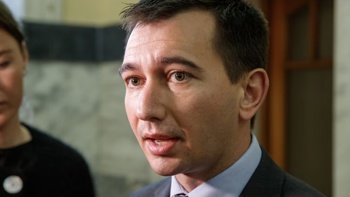The Government has released a major new 10-year plan for reviving the country’s health infrastructure.
Health Minister Simeon Brown said $20 billion in funding would be needed to bring New Zealand’s ageing health infrastructure up to scratch, but this would not necessarily be funded by the Crown only.
The state of the country’s health infrastructure has long been a pressing issue.
The plan, released today, lists significant planned work for 10 hospitals around the country to be carried out as smaller projects spread across three or four stages.
This includes emergency department upgrades for five of the hospitals, ICU upgrades at Waitakere Hospital and an outpatient community hub at Gisborne Hospital. Specific timelines and dates for the upgrades were not included in the plan.
But Labour Party says the Government is “all talk” and it wants to see some action.
“We know we need to invest in our hospitals,” leader Chris Hipkins said.
“So far, all they have done is slow down action to rebuild our hospitals, instead we should be looking at how we can speed that up.”
Infrastructure New Zealand, a member’s association, largely supports the Government’s plans, but wants to see greater use of private investment to cover that $20b infrastructure price tag.
“We see this as an opportunity for the Government to expand its approach to using private capital in the provision of health infrastructure, while still ensuring ownership of the assets remains with the Crown.”

Indicative stages of significant builds across the infrastructure portfolio. Photo / Health NZ Te Whatu Ora
Brown says the plan is the first of its kind for New Zealand. It envisions a new approach to building and upgrading health infrastructure by doing it in smaller stages rather than single, large-scale structures, he says.
“Our health system is under significant pressure from ageing infrastructure that hasn’t kept pace with the needs of a growing and ageing population,” Brown says.
“The average age of our public health estate – 1274 buildings across 86 campuses – is around 47 years. This is creating some significant challenges."
The plan focuses on major remedial work to avoid service disruption, facilities with poor seismic ratings or serious compliance risks and outdated infrastructure that cannot support modern health practices.
“The state of our health infrastructure is not a new challenge; it is a problem that has developed over multiple decades. Addressing it requires a long-term plan to both renew existing capacity, and invest in new facilities, to meet future demand.”

Health Minister Simeon Brown. Photo / Mark Mitchell
More carparks
The plan proposes 11 projects to expand or upgrade hospital car parking sites, including 1100 more parking spaces at Wellington Hospital.
Health NZ Te Whatu Ora says as hospital demand has grown, car parking supply has tended to remain static. Insufficient spaces to park can lead to people missing their appointments, it said.

Proposed car park upgrades and new builds included in the Government's national infrastructure plan. Photo / Health NZ Te Whatu Ora
Urban hubs
The plan includes building and expanding “urban ambulatory hubs” – facilities of sufficient scale that would be operated by Health NZ for ambulatory care and treatments.
Health NZ Te Whatu Ora says this means people can access care closer to home and decongests hospital sites.
New facilities have been earmarked for Kaitāia, Gisborne, Warkworth, Tauranga, Kerikeri, north Waikato and Wellington.
Mental health care
The plan also targets in-patient public health mental health care services, rather than residential, out-patient or community care.
It includes upgrades at Auckland City Hospital, Hillmorton and Waitematā, and a new facility at Taranaki Hospital.

The plan focus on inpatient mental health and addiction services provided by Health NZ. Photo / Health NZ Te Whatu Ora
Dunedin Hospital
Brown also announced the next steps for the new Dunedin Hospital. A tender process had begun for the next stage of construction of the inpatient building, with works to recommence on the former Cadbury site from mid-year.
This would cover work on the substructure of the building while commercial commercial negotiations for the main construction continued, he said.
Read the Government’s Infrastructure Plan here.
Julia Gabel is a Wellington-based political reporter. She joined the Herald in 2020 and has most recently focused on data journalism.
Take your Radio, Podcasts and Music with you









